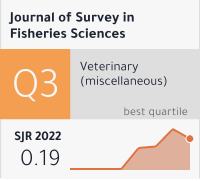Characterizing Particulate Matter Pollution in Kanpur: Sources, Distribution, And Health Implications
DOI:
https://doi.org/10.53555/sfs.v10i2.3407Keywords:
Air quality, IIT, Kanpur, PM2.5, PM10Abstract
The purpose of this study was to examine the PM10 and PM2.5 levels of the air in Kanpur, India, as well as the chemical composition of the air in terms of heavy metals and the PM10 component, BSOF. Three sites were chosen for sampling: the Juhi Colony (JC) (residential site), IIIT (control site), and the Kanpur Central Railway Station (KCRS) (commercial site). Between February 2024 and July 2024, a total of eight-eight 24-hour samples were taken at these sites for PM2.5 and PM10. To determine the levels of heavy metals and the hazardous organic component by measuring BSOF, the PM10 samples that were collected were submitted to chemical analysis. The levels of BSOF (1 to 170 mg m–3), PM10 (45 to 589 mg m-3), PM2.5 (25 to 200 mg m-3), and heavy metals were greatest at KCRS, then JC and IIT. The research came to the conclusion that Kanpur's total air quality was much worse than that of other cities in India and beyond. As with PM10 and PM2.5, the concentrations of heavy metals were about five to ten times greater than those seen in European cities. The investigation came to the conclusion that PM2.5 monitoring and control needed to be addressed. For a preliminary evaluation, a linear model was proposed to forecast PM2.5 using frequently measured parameters, PM10 and BSOF, since regular monitoring of PM2.5 can take some time.









